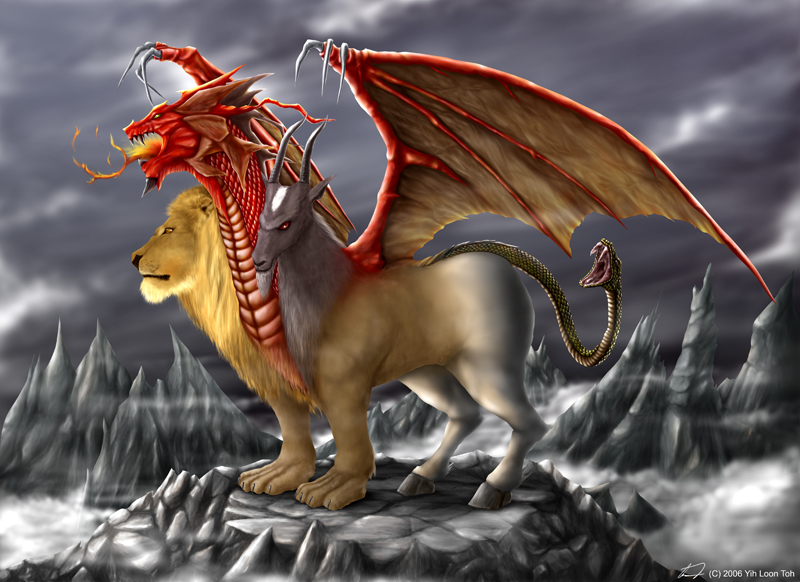
Thanks to the unique method of reproduction of the species, Chimera Ant soldiers often inherit advantageous traits of the fodder species the queen fed on. The Chimera Ant Queen with first generation soldiers

Notably, regardless of their non-insect genes, many of them retain arthropod legs. ĭue to this unique method of reproduction, each generation of Chimera Ants is profoundly different from the one that preceded it, and even individual Ants from the same generation exhibit profound genetic differences, which are expressed by their unique appearance: a fodder species/Ant hybrid, the former component depending on the queen's diet. Humans in particular are known to be extremely nutritious fodder for Chimera Ant queens.
#Chimera animal full#
To take full advantage of the genes of a particular species, Chimera Ants have been known to feed until the fodder species is driven to extinction in its ecosystem. The queen can produce up to five eggs with one meal. Though, regardless of what traits they possess, Chimera Ants are still ultimately insects. If the queen devoured a butterfly, a crab, and a fish, the offspring might have butterfly wings, crab claws, and a fish tail. Furthermore, if the queen devours multiple different species in a single sitting, then the offspring will have the genes and characteristics of those multiple species. For example, if the queen were to eat a butterfly, the offspring might be born with butterfly wings. By eating other creatures, a Chimera Ant queen can impart the characteristics of ingested creatures onto the next generation of Chimera Ants it gives birth to. 4.2 Unclear/Indeterminable Chimera AntsĬhimera Ant queens possess an entirely unique method of reproduction known as Phagogenesis ( 摂 ( せっ ) 食 ( しょく ) 交 ( こう ) 配 ( はい ) ( ) ( ) ( ) ( ) ( ) ( ), Sesshoku Kōhai), a term meaning reproduction through devouring.We hope that our results, in revealing the conceptual and argumentative structure of the debate and highlighting some its most notable tendencies and prominent positions, will facilitate continued discussion and provide a basis for the development of relevant policy and legislation.Ĭhimera research Ethics Human-animal chimeras Systematic review. A significant proportion of identified passages (46%) fell under Category C. The reasons against conducting chimera research fell into four further categories: reasons concerning the creation of a chimera (Category A), its treatment (Category B), reasons referring to metaphysical or social issues resulting from its existence (Category C) and to potential downstream effects of chimera research (Category D). 15% of the retrieved passages contained reasons in favor of conducting chimera research (Category P), while 85% of the passages contained reasons against it. We classified these reasons into five categories and, within these, identified 12 broad and 31 narrow reason types.

Within these articles, we found 464 passages containing reasons for and against conducting human-animal chimera research. Papers containing ethical reasons were analyzed, and the reasons were coded according to whether they were endorsed, mentioned or rejected.įour hundred thirty-one articles were retrieved by our search, and 88 were ultimately included and analyzed. We conducted a systematic review of the ethical literature concerning human-animal chimeras based on the research question: "What ethical reasons have been given for or against conducting human-animal chimera research, and how have these reasons been treated in the ongoing debate?" Our search extends until the end of the year 2017, including MEDLINE, Embase, PhilPapers and EthxWeb databases, restricted to peer-reviewed journal publications in English. This paper attempts to remedy this by providing a systematic review of ethical reasons in academic publications on human-animal chimera research. Due to the many dimensions of potential ethical conflict involved in this type of research, and the wide variety of research projects under discussion, it is difficult to obtain an overview of the ethical debate. The burgeoning field of biomedical research involving the mixture of human and animal materials has attracted significant ethical controversy.


 0 kommentar(er)
0 kommentar(er)
